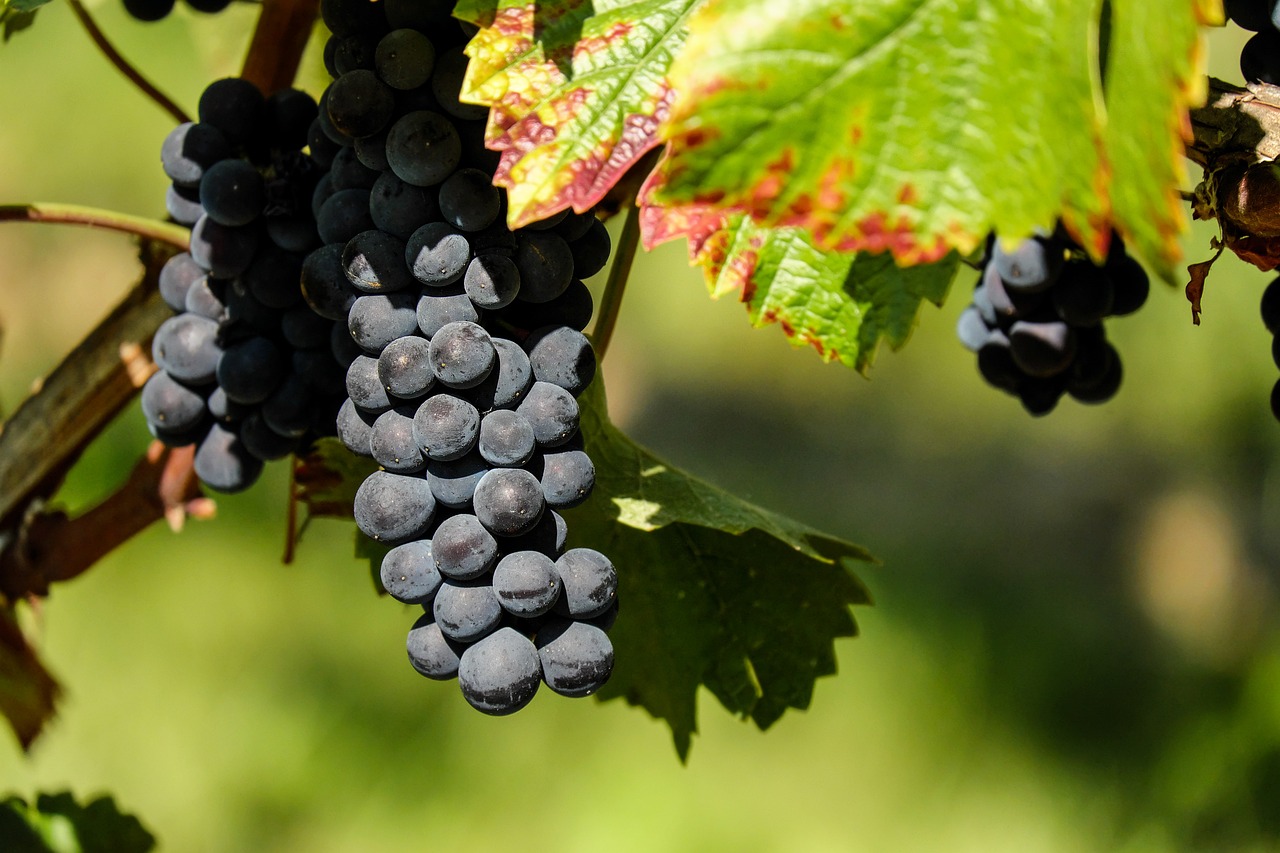The world of winemaking is a delicate dance between nature and nurture. While the grapevine is undoubtedly the star of the show, the ecosystem surrounding it plays a crucial supporting role.
Companion planting, the practice of strategically planting certain species alongside your grapevines, can help create a balanced and thriving vineyard ecosystem.
The Art of Companion Planting
Companion planting is a time-tested agricultural technique that involves growing specific plants near one another to provide mutual benefits.
In the case of grape cultivation, companion plants can serve various purposes, from improving soil health to deterring pests and enhancing grape flavor.
Let’s dive into the top 10 companion plants for grapes and their remarkable contributions to a flourishing vineyard.
1. Lavender (Lavandula spp.)
Lavender isn’t just a treat for the senses; it’s a valuable companion plant for grapes. Its aromatic foliage can deter common grape pests like moths and aphids. Lavender’s well-drained soil requirements also make it an excellent partner for grapevines, as it doesn’t compete for moisture.
2. Rosemary (Rosmarinus officinalis)
Rosemary is another aromatic herb that can benefit grapevines. It repels insects such as mosquitoes and bean beetles, which can harm your grapes. Additionally, its deep roots can help improve soil structure and prevent erosion in your vineyard.
3. Clover (Trifolium spp.)
Clover is a nitrogen-fixing plant that can boost soil fertility. It captures atmospheric nitrogen and converts it into a form that grapevines can readily use. Planting clover as ground cover in your vineyard can reduce the need for synthetic fertilizers and promote a healthier grapevine ecosystem.
4. Chamomile (Matricaria chamomilla)
Chamomile is renowned for its soothing qualities, and it brings a calming influence to your vineyard as well. Planting chamomile near grapevines can deter certain pests and encourage a diverse range of beneficial insects. Its delicate white flowers add a touch of beauty to your vineyard too.
5. Nasturtium (Tropaeolum majus)
Nasturtiums are not only eye-catching with their vibrant orange and yellow flowers but also effective in pest management. They repel aphids, whiteflies, and cucumber beetles. Plus, nasturtiums are edible and can be a delightful addition to your culinary adventures.
6. Borage (Borago officinalis)
Borage is often called the “starflower” due to its stunning blue blooms. In the vineyard, it acts as a pest magnet, attracting harmful insects away from your grapevines. This makes it an excellent sacrificial plant that helps protect your valuable grapes.
7. Comfrey (Symphytum spp.)
Comfrey is a dynamic accumulator, meaning it draws up nutrients from deep within the soil and stores them in its leaves. When the leaves fall and decompose, they release these nutrients, enriching the soil. This nutrient cycling can enhance the overall health of your grapevines.
8. Dill (Anethum graveolens)
Dill is more than just a pickling herb; it’s a natural insect repellent. Its feathery foliage emits a strong aroma that deters pests like aphids and spider mites. Dill also attracts pollinators, which can benefit grape flowering and fruit set.
9. Yarrow (Achillea millefolium)
Yarrow is a medicinal herb with potent pest-repelling properties. Its fragrant flowers attract beneficial insects like ladybugs and parasitic wasps, which help control grape-damaging pests. Yarrow’s deep taproots can also improve soil structure.
10. Marigold (Tagetes spp.)
Marigolds are well-known for their ability to repel nematodes, microscopic soil-dwelling pests that can harm grapevines. Planting marigolds in your vineyard can help reduce nematode populations naturally. Their vibrant colors can also add a touch of vibrancy to your vineyard landscape.
Implementing Companion Planting in Your Vineyard
Now that we’ve explored the top 10 companion plants for grapes, let’s discuss how to integrate them into your vineyard successfully. Here are some practical steps to get you started:
1. Plan Your Layout
Before planting companion plants, carefully plan your vineyard layout. Consider the spacing between grapevines and companion plants to ensure they have enough room to thrive without competing for resources.
2. Select the Right Varieties
Choose companion plants that are well-suited to your climate and soil conditions. Native or locally adapted species often perform best and require less maintenance.
3. Timing Matters
Plant companion species at the right time of year to coincide with your grapevines’ growth stages. This ensures that both your grapes and companion plants receive the maximum benefits from their partnership.
4. Maintenance and Care
Regularly monitor your companion plants for signs of pests or disease. In some cases, companion plants may require specific care to thrive. For example, herbs like rosemary and lavender may need occasional pruning.
5. Experiment and Learn
Companion planting is as much art as it is science. Don’t be afraid to experiment with different combinations of companion plants to see what works best in your vineyard. Keep a journal to record your observations and refine your approach over time.
The Benefits of a Balanced Vineyard Ecosystem
Companion planting offers a range of benefits to your vineyard ecosystem:
1. Pest Control
Many companion plants naturally repel common grape pests, reducing the need for chemical pesticides.
2. Improved Soil Health
Nitrogen-fixing plants like clover enhance soil fertility, while dynamic accumulators like comfrey improve nutrient cycling.
3. Biodiversity
Companion planting encourages a diverse range of insects, including pollinators and natural predators of grape-damaging pests.
4. Erosion Control
Plants with deep root systems, such as rosemary, help prevent soil erosion and stabilize the vineyard landscape.
5. Aesthetic Value
Companion plants can add beauty and diversity to your vineyard, creating a more visually appealing landscape.
Conclusion
Creating a balanced vineyard ecosystem through companion planting is not only environmentally friendly but also a sound strategy for producing high-quality grapes.
The top 10 companion plants mentioned in this article offer a range of benefits, from pest control to soil improvement and beyond.
By carefully planning and maintaining your companion plantings, you can cultivate a thriving vineyard that produces exceptional grapes while promoting biodiversity and sustainability.
So, don’t hesitate to explore the world of companion planting and reap the rewards in your vineyard. Cheers to a fruitful and harmonious grape-growing season!



